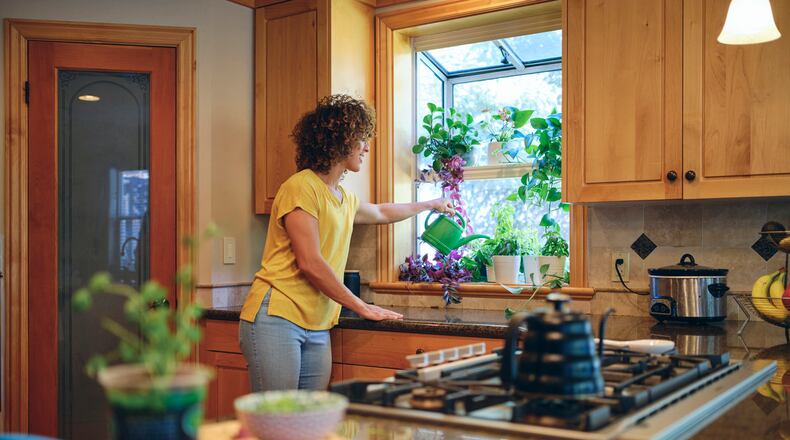Why grow herbs?
In addition to the fact that they take little space to grow and are pretty forgiving in terms of gardening errors, herbs are ideal for an indoor garden because they don’t need a great deal of sunlight or space. You can also use herbs to add to your meals, enhance flavor, and boost your cooking throughout the winter.
And there is no need to weed.
How to get it started
While there are countless tips you can follow to get your herb garden started right, the following are a few easy-to-implement strategies to have the most successful herb garden possible:
- Although you don’t need to worry about weeds, it is good to install a weed barrier at the bottom of your pot. This isn’t to protect against weeds, but instead to keep your soil from running out of the pot and making a mess each time you water your herbs.
- Before you plant anything, ensure all your pots have good drainage holes. Herbs will not grow well if their roots are saturated with water, so water needs to be able to drain away.
- Use potting soil that draws well and includes nutrients to give your herbs the best chance of success.
- Give your herb garden plants plenty of room to grow and spread out so they will reach their full potential.
Now that you know some general how-to tips, let’s consider the actual steps you need to make your herb garden dream a reality:
- Select your container: Growing indoors means you need a good herb container. Make sure that any container or pot you use has enough room for the ball of the herb to fit. Keep in mind, since many herbs have shallow roots, your container likely doesn’t need to be any deeper than six inches. Sizing up too much can actually harm herbs. Terra-cotta pots are ideal because they are made of natural materials. Remember, since you are growing food, you want to look for containers that say “food grade” or “untreated.”
- Add drainage holes: Next up, make sure that your pots have adequate drainage holes. As mentioned above, proper drainage is immensely important. Ideally, holes should be spaced every three to four inches.
- Choose your herbs and plant sway: After prepping your container and adding soil, it’s time to plant your herbs. You can easily grow a few different types of herbs in the same container. Generally, the best herbs to grow indoors include those in the mint family, like lemon balm, lavender, basil, rosemary, sage, and oregano.
Remember the tips listed above as you create your own indoor herb garden to ensure fresh ingredients throughout the winter. Also, know that if you don’t succeed at first, you can try, try again. While herb gardens are easier to grow than other gardens, that doesn’t mean you will always find success instantly. It might take a bit of trial and error to hone in on what works in your home.
We’re always looking for story ideas for this section
Are you an expert in home living, gardening, plumbing, construction and more? We want to hear your story ideas and connect with you as a source. Email HomePlus writer Marie Kriedman at writeawayk@gmail.com.
About the Author
